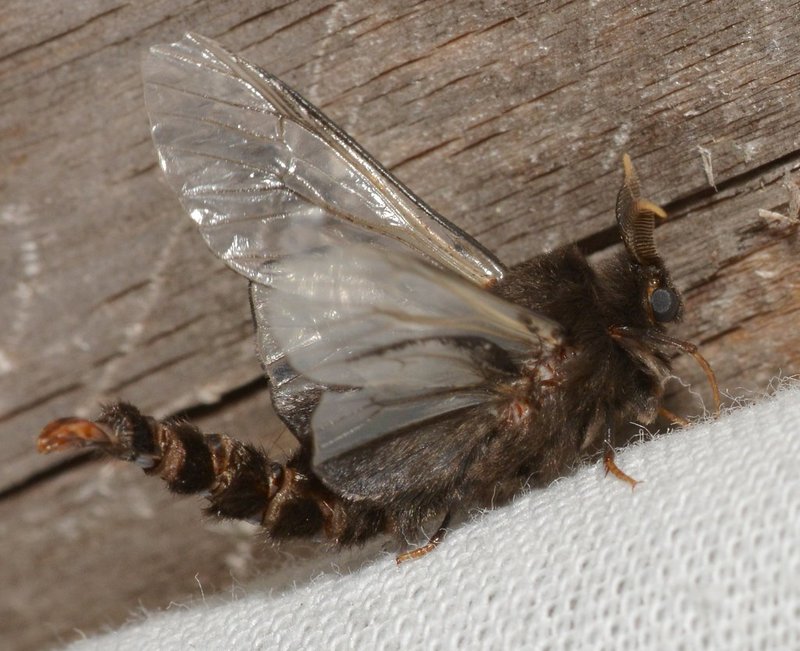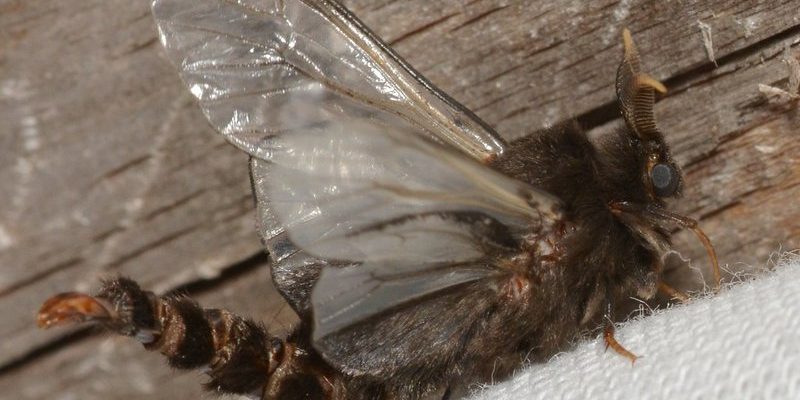
You might have seen small, dangling bags hanging from the branches of trees, especially during late summer. These curious little structures belong to the Bagworm Moth, a fascinating creature that goes through quite an intriguing life cycle. While they might look harmless, bagworms can have a significant impact on trees and shrubs, making understanding them essential for gardeners and nature lovers alike.
The Bagworm Moth is known for its remarkable ability to camouflage itself using materials from its surroundings. Picture a tiny caterpillar wearing a coat made from twigs, leaves, and silk, which helps it blend seamlessly into its environment. This clever disguise is just one of the many captivating aspects of the Bagworm Moth and its life cycle, which can be both enchanting and a bit daunting.
What Are Bagworm Moths?
Bagworm Moths, belonging to the family Psychidae, are a group of moths primarily found in North America. They are well-known for their unique larval stage, where the caterpillar encases itself in a protective case made from plant materials. This case, often referred to as a “bag,” serves as both armor and a home. As they mature, bagworms will grow to be about 1 to 2 inches long, with their bags sometimes reaching lengths of up to 4 inches.
These moths undergo a complete metamorphosis, which means they transition through four life stages: egg, larva, pupa, and adult. The adult moth emerges from the protective bag, having transformed over time, and is characterized by its slender body and reduced wings. They tend to have muted colors which help them avoid predators, further illustrating their survival strategy.
Life Cycle of the Bagworm Moth
The life cycle of the Bagworm Moth is a remarkable journey. It begins in late summer when adult females lay their eggs inside their bags. After a few weeks, the eggs hatch, and the tiny larvae emerge. These young caterpillars might be small, but they have a big task ahead of them — finding a suitable place to build their protective bags.
As they start their lives, the larvae will munch on nearby foliage, often selecting host plants like conifers, deciduous trees, and shrubs. This feeding behavior not only supports their growth but also allows them to gather materials to construct their bags. Once they’ve found a good spot, they weave together plant materials and silk, creating a bag that is both functional and camouflaged.
As they grow, the caterpillars will shed their skin multiple times, a process known as molting. With each molt, their bags become larger, and their bodies grow bigger. Eventually, they will pupate inside their bags, entering the next stage of their life cycle, where they’ll emerge as adult moths after a couple of weeks. This metamorphosis is a critical time, allowing them to transform and prepare for their next chapter in life.
Characteristics of Bagworm Moths
Bagworm Moths exhibit several interesting characteristics that make them unique. For one, their bags are often mistaken for small cocoons or even bird nests. These bags are constructed with a combination of silk and materials gathered from their environment, such as twigs, leaves, and other plant fragments. This helps them blend in with their surroundings, making them less likely to be noticed by hungry predators.
In terms of physical appearance, adult Bagworm Moths are typically brown or gray, which helps them remain camouflaged. Their wings are short and do not provide good flying ability, which is another reason why they prefer to stay close to their bags. Despite this, they still play an essential role in their ecosystem as both herbivores during their larval stage and as pollinators when they reach adulthood.
Bagworm Moths are also known for their peculiar mating habits. The males will emerge from their cases and fly in search of females, which remain in their bags. The male moths have long, feathered antennae, which help them detect pheromones released by the females. After mating, the females will lay eggs in their bags, continuing the cycle.
Impact on Plants and Ecosystems
While Bagworm Moths might seem harmless, their feeding habits can be detrimental to plants, especially if they infest large numbers. Their preference for conifers, such as pines, can lead to significant defoliation, weakening the trees and making them more susceptible to diseases and other pests. In some cases, extensive infestations can even kill the host plants.
The impact of Bagworm Moths extends beyond just individual plants. When their populations explode, they can change the dynamics of entire ecosystems. Forests heavily affected by these pests may see a decline in tree health, which can affect insects, birds, and other wildlife that rely on these trees for shelter and food.
For gardeners and landscapers, it’s crucial to monitor for signs of Bagworm Moths and implement control strategies if needed. Regular inspections of plants can help catch infestations early, allowing for more effective management. You might also consider using natural predators or insecticidal treatments if the problem escalates.
How to Identify Bagworm Moths
You might be wondering how to spot a Bagworm Moth or its telltale signs. The first thing to look for is the characteristic bags hanging from tree branches. As mentioned earlier, these bags can range from 1 to 4 inches long and may be covered in bits of leaves or twigs, giving them a very natural look.
During the early stages of their life cycle, the larvae are small and may be harder to notice. However, as they grow, you can see them inside the bags, often peeking out to feed on foliage. Adult moths are typically not as noticeable since they prefer to stay hidden among the branches. If you see a small, brownish moth fluttering near a bag, it’s likely a male Bagworm Moth searching for a mate.
Another clear indicator of a Bagworm Moth infestation is the loss of leaves on affected plants. If you notice that the foliage appears to be thinning, especially on conifers, it’s worth investigating for bagworm activity. Keeping an eye on your plants can help you catch these pests before they cause significant damage.
Controlling Bagworm Moths
If you’re facing a Bagworm Moth problem, don’t worry; there are several methods to manage these pests. One of the most effective approaches is physical removal. If the infestation is small, you can remove the bags by hand and dispose of them. This helps prevent the larvae from continuing their cycle in your garden.
Another option is to introduce natural predators, such as birds that eat caterpillars or beneficial insects that target bagworms. This method promotes a balanced ecosystem and can reduce bagworm populations without the need for chemicals. Additionally, maintaining plant health through proper watering and fertilization can help trees and shrubs recover from any damage caused by bagworms.
If the infestation is severe and you need to apply insecticides, consider using products specifically labeled for bagworms. Timing is crucial — applying treatments when the larvae are young and actively feeding is the most effective way to control their numbers. Always follow the manufacturer’s instructions and consider using organic options to protect beneficial insects and the environment.
Understanding Bagworm Moths is essential, especially if you have a garden or enjoy observing wildlife. These unique creatures, fascinating in their adaptations and life cycle, serve as a reminder of nature’s complexity. While their presence can be problematic in larger numbers, with careful monitoring and management, you can enjoy the beauty of your outdoor space without letting bagworms take over.
FAQ
What do Bagworm Moths eat?
Bagworm Moths primarily feed on the foliage of various trees and shrubs. They are especially fond of conifers, including pines, spruces, and cedars, but they’ll also munch on deciduous plants. Their feeding can cause significant defoliation, which can weaken or even kill the host plants if the infestation is severe.
How can I tell if my plants are infested with Bagworm Moths?
Look for small, bag-like structures suspended from branches, which are the protective cases made by the caterpillars. You may also notice thinning foliage or damaged leaves on affected plants. If you spot a small brown moth fluttering near these bags, it’s likely a male Bagworm Moth. Monitoring your plants regularly can help you catch infestations early.
Are Bagworm Moths harmful to humans?
Bagworm Moths are generally not harmful to humans. They don’t bite or sting, and their larvae pose no direct threat. However, their feeding habits can cause significant damage to trees and shrubs, which may affect the overall health of your garden. It’s essential to manage their populations to protect your plants.
How long do Bagworm Moths live?
The lifespan of a Bagworm Moth varies depending on its life stage. The larval stage can last several weeks to months, depending on environmental conditions. Adult moths typically live for only a few days to a couple of weeks, just long enough to mate and lay eggs. The entire life cycle, from egg to adult, usually spans several months.
Can Bagworm Moths be controlled naturally?
Yes, Bagworm Moths can be controlled naturally through various methods. Introducing natural predators, such as birds and beneficial insects, can help keep their populations in check. Additionally, maintaining plant health through proper care can make plants more resilient to infestation. Regular monitoring and early intervention are also key to managing bagworm populations without chemicals.
What insecticides are effective against Bagworm Moths?
If you need to apply insecticides, look for products specifically labeled for bagworms. Insecticides containing Bacillus thuringiensis (Bt) are often effective against young larvae and are considered safer for beneficial insects. Always follow the manufacturer’s guidelines and apply treatments when the larvae are most vulnerable, typically in the early stages of their life cycle.
When is the best time to search for Bagworm Moths?
The best time to search for Bagworm Moths is during the late summer and early fall when the larvae are fully developed and their bags are more noticeable. However, regular checks throughout the growing season can help catch early infestations. Keeping an eye on your trees and shrubs during their active feeding periods can help you stay ahead of any potential problems.
Do Bagworm Moths have any natural predators?
Yes, Bagworm Moths have several natural predators, including birds, particularly those that feed on caterpillars, and beneficial insects like wasps that parasitize the larvae. Encouraging these natural predators in your garden can help manage bagworm populations effectively, reducing the need for chemical treatments.
How can I prevent Bagworm Moths from infesting my garden?
Preventing Bagworm Moths involves several proactive strategies. Regularly inspect your plants for signs of infestation and remove any bags you find. Keeping your plants healthy through proper watering and fertilization can enhance their resilience. Additionally, introducing natural predators or using organic insecticides can also help keep bagworm populations at bay.
Are Bagworm Moths beneficial in any way?
While Bagworm Moths can cause damage to plants, they also play a role in the ecosystem. Their larvae serve as a food source for various birds and other predators, contributing to the food web. Furthermore, their presence can indicate plant health and biodiversity in an area, reminding us of the complex balance in nature.

